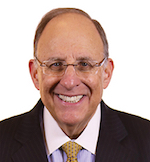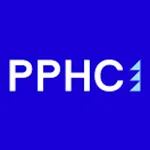 Richard Goldstein |
To be successful in 2019, you need to assess how 2018 went for your agency and what changes, if any, need to be made.
In 2013, I wrote a column titled “Turn on your profit meter.” To start this month, I’m again going to discuss these issues. Five years has gone by and it’s time for a refresher course if you will.
Rick Gould has recently published his surveys on the public relations industry. They not only provide a “report card” of the industry but a road map to prosperity. I also plan on reviewing my past columns to write a compilation of advice I’ve given in the past.
So, here goes! There are six areas that I believe are critical to insure prosperity in 2019:
Over-servicing. After all these years, over-servicing hasn’t gone away. Stop or reduce this at any cost. After all, the PR agency isn’t getting paid for the over-servicing, so why do it? Get a monthly report on time invested against the retainer, so you can put the brakes on if needed.
Time reporting. I’m not aware of many clients of a CPA firm or a PR agency that will accept an open-ended hourly fee. That said, time reporting is still a necessary cost accounting tool. Insist that employees submit time spent daily, or at least once a week. Daily, however, is preferable. Set an example yourself. Recording time while it’s still fresh in the staff’s mind is crucial.
Communicate. Are you consistently over retainer or over budget because the clients keep on adding work or changing the scope in the middle of a program without an increase in the retainer or budget? If so, talk to the client. The operative words are “Change Order.” Most of your clients, I believe, aren’t out to force you to operate at a loss. Remember, it’s your responsibility to make sure your agency earns a decent profit.
Stop work? If you’re consistently over budget or over retainer and your staff isn’t operating efficiently or they can’t bring themselves to stopping work, you have a different problem. If you have budgeted wrong, you need to find out sooner than later. While you may not be able to cure the problem currently, you can do what’s necessary to not have this issue happen again.
Walk away. If all else fails — and there’s no other way to stop the profit drain — walk away! What’s the point on continuing work with a client if you can’t produce quality work and can’t make money on the account? Move on!
Raise your hourly rates. If your account staff bill an average of 1,400 hours annually and you raise rates an average of only $10, that’s an increase in revenue of $14,000 per person annually. If you have 20 staff, that’s $280,000 additional income. I believe this should be palatable to most clients. Also, consider a billing rate review. Determine what your rates should be based on your direct labor costs, overhead and desired profitability percentage. Then try and benchmark this against your competition. This exercise will tell you a good deal on how you run your agency.
Pick you clients. Why spend your time hanging onto some small, miserable, poorly managed, never-going to-make-it clients who bore your staff but help keep the lights on? You tell me! Maybe there’s more opportunity to cast your bait where bigger and more attractive fish are lurking. Clients who give your best staff the chance to do work they’re proud of and which does not put them to sleep in the middle of the day, may just give you the opportunity to make more money.
Best practices in the PR Industry
The Gould “Best Practices” report includes what’s seen as the 22 most critical benchmarks for a PR agency to track. In addition to this, I’ll be discussing in future columns trends in billing rates and utilization as well as revenue growth in the PR industry.
It’s not possible to include all 22 benchmarks in this column, but the most critical are: revenue per professional; total labor cost; total operating expense (overhead); operating profit; average monthly minimum fees.
Operating profit. The benchmark in the industry — or at least the firms surveyed — is 18 percent. While this percentage has increased from 2015, the report comment is “This is in the right direction.” According to the report, most firms are showing 20 percent. In my view, this isn’t in the right direction! In 2015, the survey indicated 15.2 percent. Going from 15.2 percent to 18 percent is not a big deal. There can be many factors, including inflation, that can account for the increase. However, 18 percent or even 20 percent is nothing to write home about. So, what should your target operating goal be? Well, in my view, the bar needs to be raised to 25 percent to 33.3 percent. If you think this isn’t obtainable, you’re wrong!
I’ve reached my limit this month. Be sure to read my column next month on this subject.
***
Richard Goldstein is a partner at Buchbinder Tunick & Company LLP, New York, Certified Public Accountants.


 Omnicom CEO John Wren reports Q1 revenues jumped 5.4 percent to $3.6M, powered by a solid 7.0 percent rise in its advertising & media segment.
Omnicom CEO John Wren reports Q1 revenues jumped 5.4 percent to $3.6M, powered by a solid 7.0 percent rise in its advertising & media segment. Public Policy Holding Company registered 24.1 percent growth to a record $135M during the past year, which included the results of the March 1 acquisition of Multistate Assocs.
Public Policy Holding Company registered 24.1 percent growth to a record $135M during the past year, which included the results of the March 1 acquisition of Multistate Assocs. Stagwell CEO Mark Penn reported Q4 net revenues dipped 5.6 percent to $551.1M during a “challenging year for marketing services and digital transformation.”
Stagwell CEO Mark Penn reported Q4 net revenues dipped 5.6 percent to $551.1M during a “challenging year for marketing services and digital transformation.” Why M&A activity in the PR and marketing sector could pick up in 2024.
Why M&A activity in the PR and marketing sector could pick up in 2024. WPP reported Q4 revenues inched ahead 0.3 percent to $4.1B as CEO Mark Read wrapped up a year that he said was more challenging than expected due to cutbacks, mainly by technology clients.
WPP reported Q4 revenues inched ahead 0.3 percent to $4.1B as CEO Mark Read wrapped up a year that he said was more challenging than expected due to cutbacks, mainly by technology clients.


 Have a comment? Send it to
Have a comment? Send it to 
No comments have been submitted for this story yet.